
|
Ahmed I. Abdelrahman was born in Cairo, Egypt. He finished his undergraduate studies at Cairo University. Directly after graduation from the Chemistry department, he worked for Coatech in the production of electrostatic powder coatings. In 1999, he moved to Salem, Ohio to join the American Standard Acrylic plant. Later, he moved back to their plant in Egypt to be their Analytical Equipment and Training Coordinator, especially for polymer characterization with gas and gel permeation chromatography. Later he was promoted to be Lab. Deputy Supervisor with additional duties in polymer formulations and colorant matching. After spending one year as a lab supervisor in the American University in Cairo (AUC), he moved to Japan to join The Department of Electronic Chemistry at the Tokyo Institute of Technology. There, he pursued his masters studies doing research on electro-catalytic activity of gold nanoparticles under the supervision of Professor Takeo Ohsaka. In January 2007, Ahmed joined the Winnik group to design lanthanide-containing polymer nanoparticles for biological tagging applications like non-specific endocytosis and cell adhesion, employing ICP-MS to detect metal-tagged biological cells, like cancer cells. Currently, his research is devoted to the design of lanthanide-encoded polymer microspheres for mass cytometry-based multiplexed immunoassays and gene expression analysis. |

|
Maite Aramendía was born in Spain in 1978. She obtained her MSc degree in Chemistry at the Universidad de Zaragoza in 2001 and her PhD in Analytical Sciences in 2006. During her PhD—under the supervision of Prof. Dr. Martín Resano and Prof. Dr. Miguel Ángel Belarra—she studied the possibilities of graphite furnace-related techniques (Graphite Furnace-Atomic Absorption Spectrometry and Electrothermal Vaporization-Inductively Coupled Plasma-Mass Spectrometry) for the direct analysis of solid samples. Part of her PhD work was carried out in Prof. Dr. Frank Vanhaecke’s group in Ghent, where she returned after finishing her PhD in 2006. Since 2007, Maite has been working as a postdoctoral researcher (BOF-UGent and FWO-Flanders fellowships) in the “Atomic and Mass Spectrometry” Research Group at Ghent University. Her research interests are still mainly focused in solid sampling analysis by means of ICP-MS-related techniques (ETV and LA) in different fields of application, such as industrial analysis, forensic sciences or archaeometry. |

|
Lieve Balcaen was born in 1978. She obtained her MSc degree in Chemistry at Ghent University (Belgium) in 2000 and her PhD in 2005. During her PhD—under the supervision of Prof. Frank Vanhaecke—the capabilities of ICP-MS for the analysis of complex materials from the imaging industry were evaluated. Therefore, pneumatic nebulization (PN) as well as electrothermal vaporization (ETV) and laser ablation (LA) were used as sample introduction techniques. Since 2005, Lieve is working as a postdoctoral researcher (Senior Research Assistant of the Fund for Scientific Research – Flanders (FWO-Vlaanderen)) in the Atomic and Mass Spectrometry Research Group at Ghent University. Her current research interests are elemental analysis of biological samples, isotopic analysis by means of single- and multi-collector ICPMS and speciation analysis by HPLC-ICPMS. |

|
Born and raised in Hong Kong, George Chan received his PhD degree in 2007 at Indiana University majoring in analytical chemistry under the supervision of Professor Gary M. Hieftje. Currently, he is an assistant scientist in the Laboratory for Spectrochemistry at Indiana University. His research interests lie in analytical chemical measurement and instrumentation, with an emphasis on understanding the fundamental mechanisms of atomic spectroscopy, and further improving instrumentation for modern multidisciplinary research. His current research activity involves chemical elemental analysis, with the ultimate goal of improving the analytical performance of plasma sources as tools for analytical chemistry. By clarifying the origin of matrix interferences that cause measurement bias, diagnostic tools can be created to identify the presence of a potential measurement error and correct for these interferences. Prior to joining IU as a graduate student, he received a BSc degree majoring in Chemistry and an MPhil degree in analytical chemistry from The University of Hong Kong. During the course of his MPhil study, he spent two summers in the laboratory of Dr. Richard Russo at the Lawrence Berkeley National Laboratory as a visiting scientist. He was involved in the development of laser ablation sampling techniques for inductively-coupled plasma spectrochemical analysis for fundamental and analytical (chemical analysis) purposes. He also studied laser beam interactions with sample materials, and the changes in plasma conditions in the ICP due to laser ablation sampling. |

|
Beatriz Fernández was born in 1978 in Oviedo (Asturias, Spain). In 2002 she joined the Analytical Spectrometry research group of Prof. A. Sanz-Medel at the Dept. of Physical and Analytical Chemistry of the University of Oviedo. In 2006 she obtained her PhD in Analytical Chemistry (European degree) under the supervision of Dr. Rosario Pereiro and Dr. Nerea Bordel working on the development of quantification methodologies based on Glow Discharge Spectrometry. During that time, she did several short placements in Switzerland at the Swiss Federal Laboratories for Materials Testing and Research (EMPA) with Dr. Johann Michler and in USA at Clemson University with Prof. Kenneth Marcus. Her PhD was awarded with the Extraordinary Doctorate Award (Analytical Chemistry) of the University of Oviedo and with the 2007 award from the College of Chemists of Asturias and Leon. Afterwards, she spent two years at the IPREM (Multidisciplinary Institute of Environmental Science and Materials) in Pau (France) headed by Prof. Olivier Donard working with Dr. Christophe Pecheyran in the field of Laser Ablation ICP-MS in combination with isotope dilution analysis and other solid state techniques, such as Atomic Force spectroscopy and XPS. Since September 2008, she has a research contract at the University of Oviedo (Spain). She is co-author of 21 publications and 1 book chapter and her main scientific interests are related to optical and mass spectrometry techniques for the direct analysis of solid materials. |
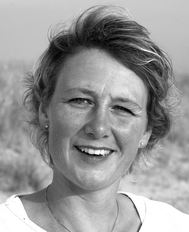
|
In 2000 Charlotte Gabel-Jensen (born in Aarhus, Denmark) obtained a master degree in pharmacy from the Faculty of Pharmaceutical sciences (FARMA), University of Copenhagen, Denmark. The selectivity of microemulsion electrokinetic chromatography was the research area, and the work was continued the following year. At that time, she left academia for a job in the medicinal industry, still working however in development in analytical chemistry at ALK Abelló in Hørsholm, Denmark. Longing for academia and teaching opportunities, she returned to FARMA in the group of associate professor Bente Gammelgaard, who introduced her to the world of selenium and selenium speciation. She obtained her PhD degree in analytical chemistry in 2008, based on the study of selenium metabolism in intestinal and hepatic metabolism models. Following that, she was granted a Post Doc position to proceed with her selenium metabolism studies. Her research in selenium speciation by LC-ICP-MS and LC-ESI-MS has now led her to become a (not so) Young Analytical Scientist. When Charlotte is not doing ICP-MS, she finds herself very preoccupied as the mother of two toddlers. Along with her husband and the little people she enjoys going for a swim with or without scuba gear and summer holidays are spent camping in Denmark with a tent and a heavily loaded VW Golf. Her other leisure project is to improve her timed 5 km run. |

|
Tamara Gusarova was born in 1983 in the small town of Istra near Moscow in Russia. After she finished school, she studied for 4 years at the Technological University “Moscow Institute for Steel and Alloys” (MISiS) at the Faculty for metallurgical technologies, with specialisation “Standardisation and certification in metallurgy”. By the end of the 8th semester, she took part in a double diploma project and went for the last two semesters to Germany, to the Technical University Mountain Academy Freiberg (TU BAF), Faculty of Materials Science and Technology, Institute of iron and steel technology. Her diploma thesis was awarded with the “Eduard-Maurer-Preis 2005”. After obtaining both diploma degrees—one Russian and one German—she started her PhD at the Humboldt University of Berlin, Faculty of Mathematics and Natural Sciences I, Department of Chemistry with Ulrich Panne. The practical work consisting of analytical characterisation of high purity materials with Glow Discharge-Mass Spectrometry (GD-MS) and Optical Emission Spectroscopy (GD-OES), she carried out at the Federal Institute for Materials Research and Testing with Ralf Matschat, in close collaboration with the German national metrology institute PTB. During her PhD, she was a visiting researcher in the GD-MS group of the National Research Council of Canada in Ottawa. Now she is married and lives with her husband in Germany close to the Dutch border. As she just defended her PhD thesis, she is now ready for the next challenge. |
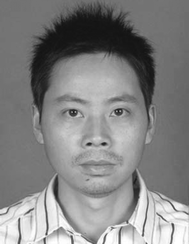
|
Zhaochu Hu was born in Zhejiang, China, in 1978. He received his BSc in chemistry in 2000 and his MSc in geochemistry in 2003 at the China University of Geosciences. The work in his master’s project concerned ‘‘Organic matrix effect in ICP-MS’’. Following this, he completed a PhD degree (2006) in geochemistry under the supervision of Professor Shan Gao at Northwest University, China. A two month visit to the group of Detlef Günther at the ETH Zurich in 2005 awakened his interest in micro analysis using LA-ICP-MS. His current research interests are focused on fundamental and applied studies using Laser Ablation/Solution Nebulization ICP-MS, with special emphasis on geological sample analysis, and chemical composition of the continental crust. He is author and co-author of approx. 30 original papers in international journals. Currently he is Associate Professor at the China University of Geosciences. |

|
Akihiro Iijima, who was born in 1977 in Japan, studied chemistry at Chuo University in Tokyo. There, he received his BSc degree in 2000 and his MSc degree in 2002. Since 2001, he has been a Research Associate in the Atmospheric Science Laboratory at the Gunma Prefectural Institute of Public Health and Environmental Sciences. In 2006, he decided to return to Chuo University for his doctoral studies, and, in 2009, he received his PhD degree in environmental studies under the supervision of Professor Naoki Furuta. The subject of his PhD thesis was the “Clarification of the predominant emission sources of antimony in airborne particulate matter and estimation of their impacts on the atmosphere.” Since 2009, he has also been a visiting fellow at the Institute of Science and Engineering of Chuo University, where he is involved in a joint research project on the characterization of nanoparticles in the atmosphere. His current research interests are the modeling of environmental circulation using tracer elements and assessment of the effects of toxic elements on the environment and ecosystem. |

|
Li Yu-Feng got his PhD in Bioinorganic Chemistry from the Graduate University of the Chinese Academy of Sciences in 2007. Now he is an Assistant Professor in the Institute of High Energy Physics, Chinese Academy of Sciences. His scientific interests focus on the combination of nuclear techniques for metallomics studies. Dr Li pays special interest to the interaction of mercury and mercury in biological systems including human beings, among which analytical techniques, especially nuclear techniques, are extensively used. He is also interested in the study of the biological effects of nanomaterials, especially metal-containing nanomaterials by nuclear analytical techniques. Dr Li is the first author and coauthor of more than 20 peer-reviewed scientific papers and one of the contributors of the book Advanced Nuclear Analytical Techniques for Metallomics and Metalloproteomics published by RSC Publishing. |
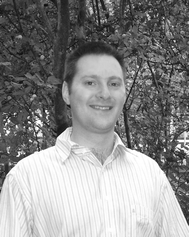
|
Helmut Lindner was born in Ludwigshafen/Rhein (Germany) in 1979. He grew up in the village of Bobenheim-Roxheim in the nice German region of Pfalz. After the usual 13 years of school, he passed the ‘Abitur' at the Albert-Einstein-Gymnasium in Frankenthal. After conscription, he began to study physics at the University of Dortmund (Germany) in 1999. In 2004, he obtained his ‘Diplom' in physics which is comparable with the master degree recently introduced into the European Union education system. Subsequently, he did his PhD in the group of Prof. Dr K. Niemax at ISAS in Dortmund. He worked on the improving and further understanding of laser ablation for solid sampling, especially with regard to inductively coupled plasma (ICP) spectrometry. Particle size and composition distributions and particle transport were main topics of the research. Methods and instruments used were, beside others, fs-lasers, ns-lasers, total-reflexion x-ray fluorescence (TXRF) and ICP-MS/OES. Since July 2008, he is a post-doctoral researcher in the group PLASMANT of Prof. Dr A. Bogaerts at the University of Antwerp (Belgium). There, he works on enhanced insight and advancement of laser ablation cells and inductively coupled plasmas by means of numerical simulation. |
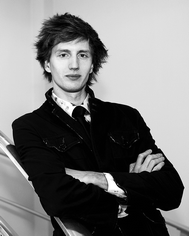
|
Juris Meija studied chemistry at the University of Latvia and at the age of 24 graduated from the University of Cincinnati (USA) with a PhD under the supervision of Professor Joe Caruso. Juris is currently an Assistant Research Officer at the Institute for National Measurement Standards (Ottawa, Canada), where he focuses on all matters related to isotopes in the borderline of mathematics and theoretical analytical chemistry. He is currently a column editor for Analytical and Bioanalytical Chemistry and a member of the prestigious IUPAC Commission on Isotopic Abundances and Atomic Weights. Although Juris has consulted for the esteemed Procter and Gamble Co., he remains humble, cherishing a recent opportunity to discuss classical music with the Latvian State Radio. As a product of the Soviet education system, he has a natural fondness for mathematics. In his free time, Juris creates artwork that juxtaposes chemical concepts with images of the everyday. |

|
Fabiola Manhas Verbi Pereira was born in São Paulo, Brazil, on December 28, 1975. She received her BS in Chemistry in 1999 from the Federal University of São Carlos (UFSCar, São Carlos, São Paulo State) and her PhD in Chemistry in 2007 from the Chemistry Institute at Campinas State University (UNICAMP, Campinas, São Paulo State), where her adviser was Professor Dr Maria Izabel Maretti Silveira Bueno. Following her undergraduate education, she participated in chemical research on advanced ceramics in materials science under the supervision of Professor Dr Elson Longo. While earning her PhD, Dr Pereira performed X-ray spectrometry studies using fluorescence lines of elements combined with scattering from the X-ray source and chemometric tools. In this period, she focused on work associated with paints and food. In 2008, she joined the Laboratory of Optics and Lasers at EMBRAPA Agricultural Instrumentation (São Carlos, São Paulo State) as a postdoctoral fellow. Her postdoctoral work consists of developing analytical methods to answer agricultural questions using techniques such as molecular fluorescence imaging, laser-induced breakdown spectroscopy and X-ray fluorescence associated with chemometric tools. She focuses her research on the analysis of samples without pre-treatment, thereby improving speed and decreasing the generation of residues. She also believes in multidisciplinary interaction to foster scientific fields. |

|
Daniel Pröfrock was born in Germany in 1974. He started his studies in chemistry at the University of Hamburg (Germany) and graduated in Environmental Science at the University of Lüneburg (Germany) in 2001. In 2005 he obtained his PhD on the topic of “Development of hyphenated approaches with collision cell ICP-MS for the heteroelement specific detection of environmental and biologically relevant compounds” under the supervision of Prof. Dr Andreas Prange. Currently he is working as a research scientist at the GKSS Research Centre (Geesthacht, Germany). His research interests are focused on the application of nano and capillary LC based hyphenated techniques and mass spectrometry for speciation analysis with a special emphasis on the development of new approaches for the utilization of a heteroelement specific detection in life science and environmental related topics. Outside of the lab his wife, the kids and two dogs keep him on the move. |

|
Pablo Rodríguez-González obtained his Masters Thesis at the Institute of Chemical Technologies and Analytics of the Vienna University of Technology (Austria) under the supervision of Prof. Erwin Rosenberg. In 2005, he defended his PhD at the University of Oviedo under the supervision of Prof. Nacho García Alonso and Prof. Alfredo Sanz-Medel working on the development of methodologies based on species-specific isotope dilution analysis. His PhD (European Degree) deserved the Award of the Spanish Society for Applied Spectroscopy in 2006 and the Extraordinary Doctorate Award (Analytical Chemistry) of the University of Oviedo. From 2005–2008, he worked as a postdoctoral researcher at the IPREM (Multidisciplinary Institute of Environmental Science and Materials) in Pau (France) under the guidance of Prof. Olivier F. X. Donard and Dr David Amouroux. His postdoctoral research was focused on the use of species-specific stable isotope tracers to investigate the biogeochemical cycle of organometallic contaminants as well as the species-specific isotopic fractionation of Hg. Since September 2008 he is a member of the Stable Isotope Research Group headed by Prof. García Alonso at the University of Oviedo. He is co-author of 35 publications and one book chapter and his current research is devoted to the development of new isotope dilution approaches as well as the study of the isotopic fractionation of metal species in the environment. |

|
Rebeca Santamaria-Fernandez was born in Asturias (Spain) in 1977. She graduated in Analytical Chemistry from the University of Oviedo in 1999 and then moved to the UK where she obtained a MSc in Environmental Sciences. She then accepted a PhD fellowship at Plymouth sponsored by the British Geological Survey. In 2003, she completed her PhD studies and moved to France where she was appointed as a Marie Curie Post-Doctoral Fellow within the R&D Team at Eurofins, Nantes. She joined LGC’s Mass Spectrometry Team in May 2005 as a researcher, working on isotope ratio measurements using MC-ICP-MS and IRMS. She is currently the Science Leader for Inorganic and Isotope Ratio MS within the Chemical Measurement & Calibration Team. |
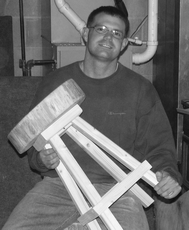
|
Gregory Schilling currently works as an analytical chemist in the research and development department at LECO Corporation in Saint Joseph, MI. Prior to this position, he received a bachelor’s degree in chemistry in 2002 from the University of Southern Indiana in Evansville, IN. While pursuing this degree, he conducted research toward the total synthesis of prenylated quinoline alkaloid compounds under the direction of Professor Shelly Blunt. During this time he also spent three months at the University of Southern Mississippi in Hattiesburg, MS where he studied the crystallization kinetics of ionomers in the research laboratory of Professor Robert B. Moore. In 2009 he received a PhD from Indiana University under the direction of Professor Gary M. Hieftje. While in the Hieftje research group, he pursued research on the development and characterization of array detectors for simultaneous mass spectral detection using a Mattauch-Herzog geometry mass spectrograph (MHMS). Throughout his term in the Hieftje laboratory, he worked with four generations of focal plane camera (FPC) array detectors. Notable contributions to this work include characterization of three FPCs using inductively coupled plasma ionization, optimization of isotope ratio data, and detection of molecular and negative ions through the coupling of a novel atmospheric pressure glow discharge source to the MHMS. In his spare time Greg enjoys running, woodworking, and many other outdoor activities. |

|
Jake Shelley was born in Albuquerque, NM in 1984. He earned his B.S. in Chemistry from Northern Arizona University in Flagstaff, AZ in 2005. Jake’s research at NAU, while working under Dr Diane Stearns, was focused on finding metal-DNA adducts in Chinese hamster ovary cells using ICP-AES. Jake worked at Los Alamos National Laboratory for four summers on a wide range of projects including metallomics using X-ray fluorescence, using nanoporous silica as a matrix-free MALDI substrate, and method development for detecting a wide range of radioactive materials. Jake joined Prof. Gary Hieftje’s group in 2005 where his current research focus has been in the development, characterization, and application of novel plasma ionization sources for ambient, molecular mass spectrometry. His particular focus has been on the Flowing Atmospheric-Pressure Afterglow (FAPA) source. In 2009, Jake received the Center for Analytical Instrumentation Development (CAID) Fellowship from Purdue University to study in Aston Labs under Prof. R. Graham Cooks. This collaborative effort has been focused on directly comparing these novel plasma sources and coupling them with a miniature mass spectrometer for portable, direct, and sensitive analyses of sample surfaces. |

|
Martin Tanner did his PhD in inorganic analytical chemistry at ETH Zurich (2007). He developed a laser ablation setup with the shortest possible aerosol transport and studied the transient ICP-MS signals. They were so short that no mass spectrometer technology could be found to handle the gain in S/N. As a postdoc at UNAM in Mexico, he figured out how powerful LA-ICP-MS is in real (geological) application. Then he recalled that there is still a need to improve instruments to measure short signals and is now working for the company which manufactures the fastest TOFMS in the world. |

|
Mattia Terenghi was born in Milan (Italy) in 1981. He was awarded the Laurea cum laude in Chemistry at the University of Pavia in 2006 under the supervision of Prof. Luigi Casella. His masters project concerned the study of electron transfer mechanisms and pathways in a model heme-protein (cytochrome c) and in its site-specific genetic variants. In addition, he was involved in a project on the study of anticancer metal based compounds with proteins. During this period, he acquired knowledge on the use of spectroscopic and spectrometric methods (such as NMR and mass spectrometry) for the study of metalloproteins. He started his PhD in 2007 at the Department of Analytical Chemistry of the University of Parma under the supervision of Prof. Alessandro Mangia, working on the development of mass spectrometry based methods coupled to immunological techniques for multiplex analysis in biological samples. Presently, he is completing his PhD studies in the CNRS’s Laboratory of Bio-inorganic Analytical Chemistry in Pau (France) under the supervision of Prof. Ryszard Lobinski, where he is developing a liquid-phase immunoassay for multiplex analysis of protein biomarkers by the use of metal-labeled antibodies and size exclusion chromatography coupled to ICP-MS. He will defend his PhD in March 2010. |

|
Born in Sydney, Australia, Stuart Thickett obtained his doctorate in the field of emulsion polymerization kinetics at the Key Centre for Polymers and Colloids, The University of Sydney in 2007. The recipient of numerous undergraduate and postgraduate awards, including the prestigious Le Fevré Lectureship at The University of Sydney and the O’Donnell Travelling Scholarship from the Royal Australian Chemical Institute, Stuart spent time at The University of Queensland before continuing his post-doctoral career at The University of Toronto, Canada. It was here in Toronto where Stuart became exposed to the applications of analytical spectroscopy, in particular the use and development of heterogeneous polymerization systems for biological detection methods. His work in Canada is encompassed in his article in this themed issue, ranging from surface functionalization of polymer particles to act as reaction scaffolds, bioconjugation as well as ICP-MS detection through novel methods. His research interests also include stimuli-responsive polymer systems and their application, controlled-radical polymerization and novel polymeric architectures as well as micropatterning of surfaces for desired applications. He also has a background in the methods of computational chemistry and reaction modelling. In the second half of 2009 he joined The Institute for Sustainable Solutions, a new flagship research centre at The University of Sydney. |

|
Dr Meng Wang was born in Beijing, China, in 1977. After graduating from Nanjing University in 2000, he worked as a research assistant in the General Research Institute for Non-ferrous Metals. He received his PhD in Bioinorganic Chemistry from the Graduate University of the Chinese Academy of Sciences in 2008. Now he is a postdoctoral fellow at the Institute of High Energy Physics, the Chinese Academy of Sciences and has published over 20 papers in peer-review journals. His scientific interests mainly focus on application of ICP-MS-based hyphenated techniques and nuclear analytical techniques for metallomics and metalloproteomics studies. |

|
Yanbei Zhu was born in He’nan province, China, in 1975. He obtained his bachelor degree (1997) in applied geochemistry at the Changchun University of Science and Technology. Then, after working in Luanxian Geophysical and Geochemical Exploration Company for one year, he began his master course at Peking University and obtained the master degree (2001) in geochemistry. After that, thanks to a recommendation from Dr Zuoshen Chen (Peking University) and Dr Tsutomu Nomizu (Nagoya University), he got an opportunity to enter the research group of Professor Hiroki Haraguchi in Nagoya University, where he got a scholarship from the Japanese Government (2001) and started his study for doctoral thesis. He obtained his PhD (2005) and worked for two years as a postdoctoral researcher in Nagoya University. Since April 2007, he is working as a research scientist in the research group of Dr Koichi Chiba at the National Metrology Institute of Japan, National Institute of Advanced Industrial Science and Technology. His present work is focused on the development of certified reference materials (CRMs) for the determination of trace elements in food and environmental samples. He is also interested in the development of pretreatment methods for preconcentration and/or separation of trace elements. |























